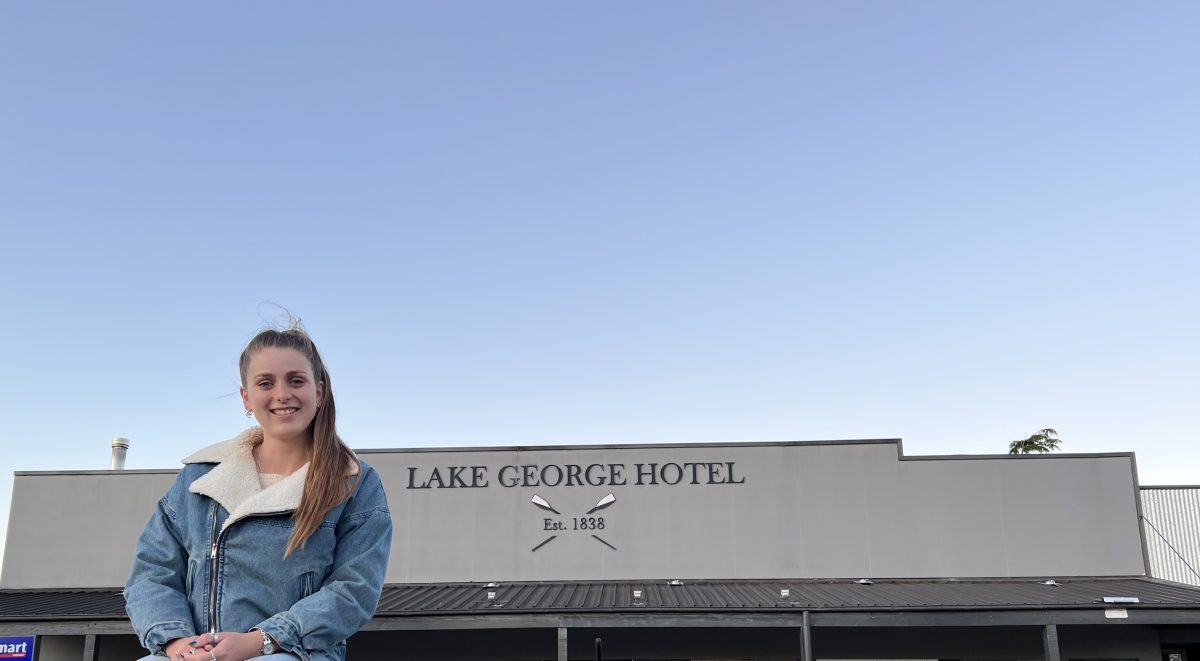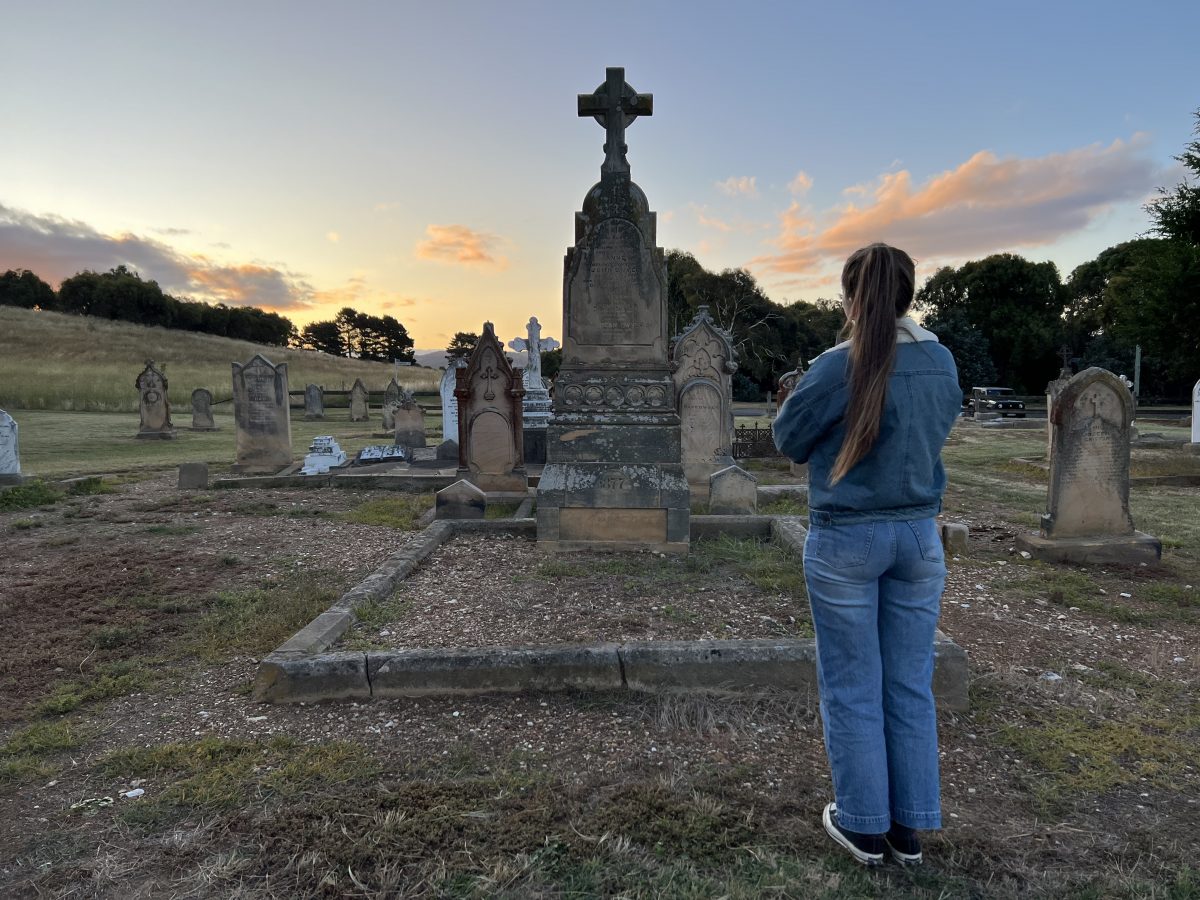
Bungendore resident Emily Cunich outside the 1838 Lake George Hotel, which she believes was built by one of her Dwyer family ancestors. Photo: Bethaniel Black, Shout Out Photography.
There was always something about Bungendore that drew Emily Cunich in – a connection that she knew was there but didn’t quite know why.
Living in Canberra with her partner, they had decided to move out of town, find somewhere a little more peaceful where they could grow a few vegetables, raise some alpacas, and generally just live the good life.
They ended up in Bungendore, moving to the small rural community outside Queanbeyan last year, with Emily saying she felt she had “come home”.
“My nan always used to tell us that our ancestors lived in Bungendore and that they’d started a pub there,” Emily said.
“When we moved to Bungendore, I tried to locate the pub my nan used to talk about. But I never made the connection with the Lake George pub because the facade looked way too modern.
“When I saw my nan over Christmas, I questioned her further and she revealed the name of the pub was The Harp.”
That was the first piece of the puzzle that Emily found after starting her family history search for the Bungendore connection.
Turns out the Lake George pub was originally known as The Harp, and opened by the son of Michael Dwyer, John Dwyer, Emma’s ancestors, back in 1838, as was the adjacent stone house, The Ashby.
But the history goes back even further with Michael Dwyer, who was, according to Emily, a Wicklow chieftain, a leader of the uprising against the British.
Emily said her research, and talking to her grandmother, Judi Elliott, revealed that the roads in the Wicklow mountains were initially built by the British in a bid to capture Michael Dwyer and his rebels.
“He was eventually caught in a shootout and should have been hanged like many other rebels were, but George III was frightened by the Irish rebels’ uprising and chose to send many Irishmen as free men to Australia,” she said.
“His descendants settled in small Irish communities in Bungendore and the region.”
Emily said she was keen to learn more about the Dwyers’ early connection to the place she now calls home.
She is keen to talk to locals who have an interest in village history so she can fill in some of the gaps.
Emily says her research indicates that Michael left Ireland with his wife Mary Dwyer (nee Doyle), while some of their children stayed behind in the motherland. On arrival in Australia, he was given land in Bungendore and his family grew. One of those children, Emily said, was John, who built The Harp hotel and The Ashby.
Many of Michael’s relatives followed him to Australia, including the family of his sister Catherine.
Emily’s research indicates Michael Dwyer wanted his remaining children in Ireland to join him in Australia, but was quite protective and didn’t want them to set out at a young age.

Emily Cunich visits the gravestone of her ancestor John Dwyer at the Bungendore Cemetery. Photo: Bethanial Black, Shout Out Photography.
“They remained with their grandparents until they were old enough to make the journey themselves,” Emily said.
“Unfortunately, Michael died when they were on the journey over before they ever got to see their father again.
“Eliza Dwyer was one of the children who made the journey over from Ireland. She is the child of Michael who I believe I am descended from.”
She believes Eliza settled in Sydney rather than Bungendore, and married twice.
Emily is keen to hear from anyone who can help with information about the Dwyer family’s connection with Bungendore.
“It would be wonderful to know if there were any distant relatives still around, especially people who can help fill in the gaps with our family history.
“People have told us there are a few old-timers about … I’d love to speak to them.
“It would be wonderful to get a picture of what this place looked like all those years ago.”
If you can help Emily on her quest to uncover more of the history of the Dwyer family and their connection to Bungendore, email her at emilycunich@hotmail.com.
“Bungendore is our forever place now,” she said. “I’ve come back to where it all started.”
Original Article published by Sally Hopman on About Regional.












